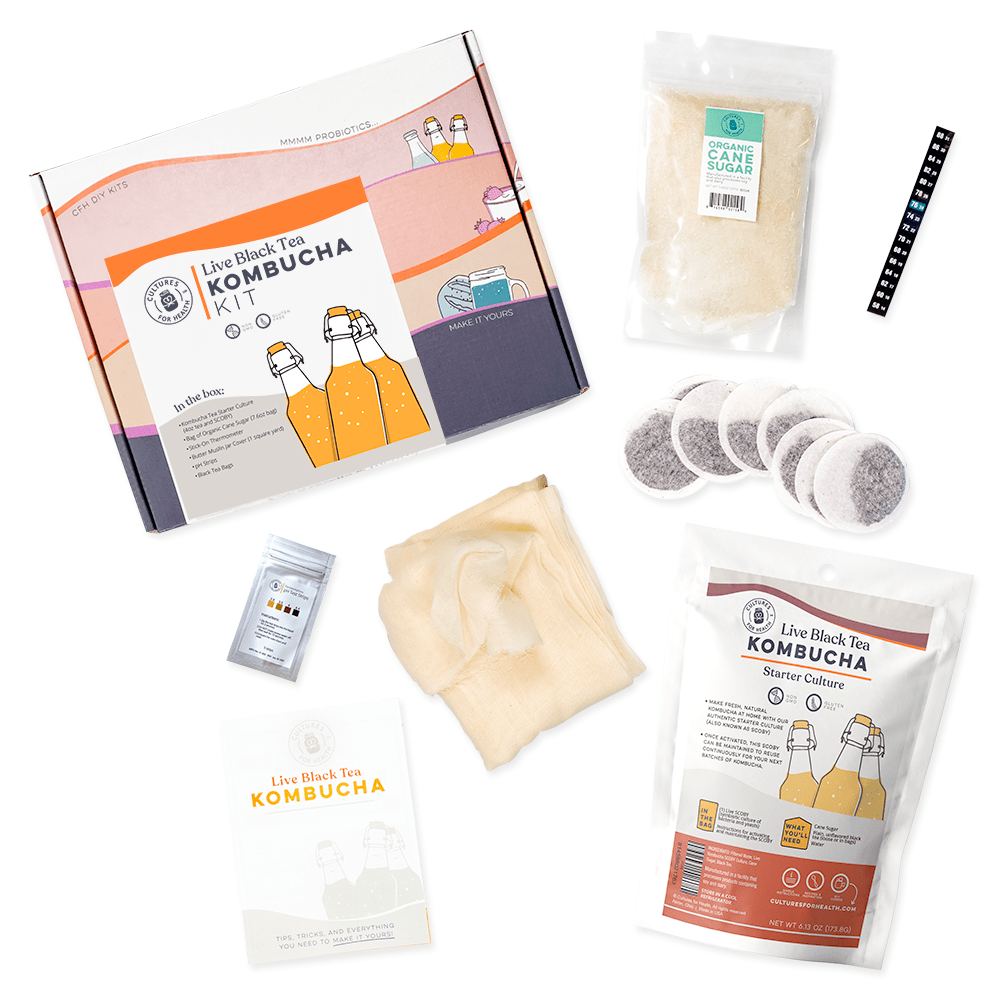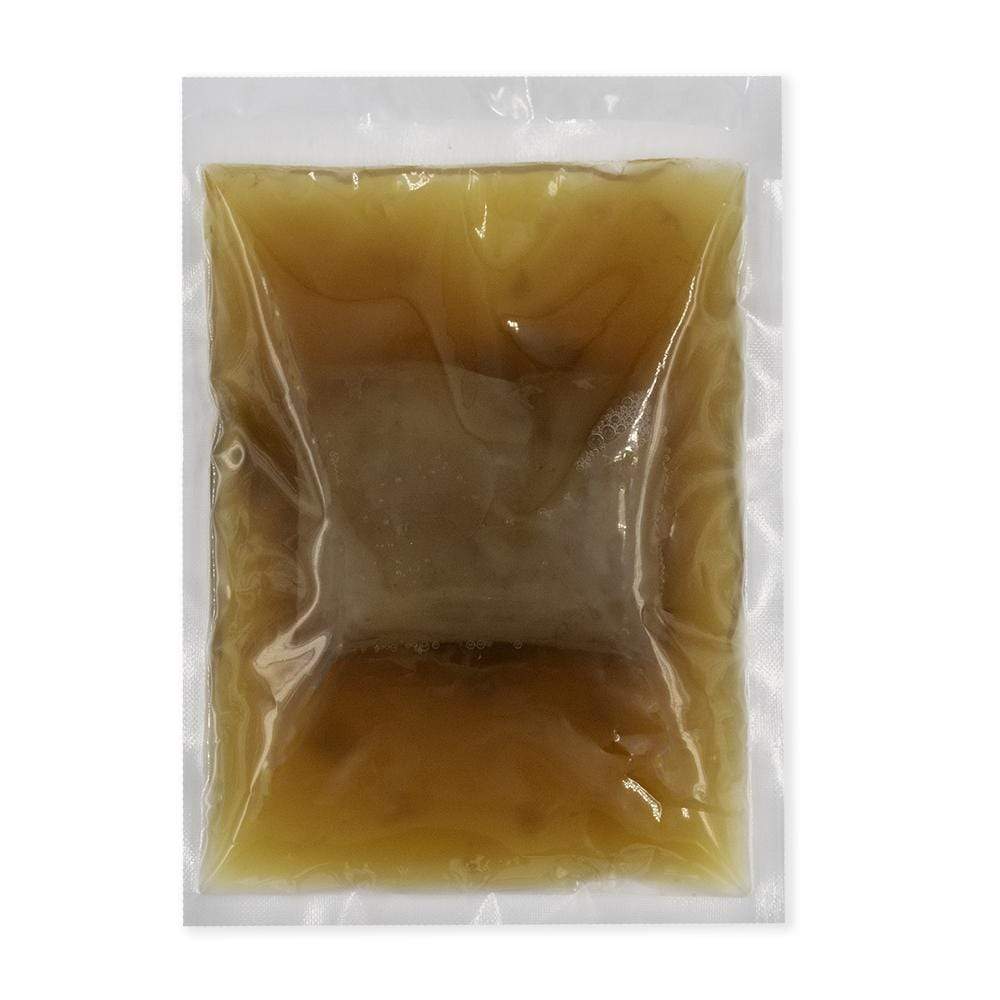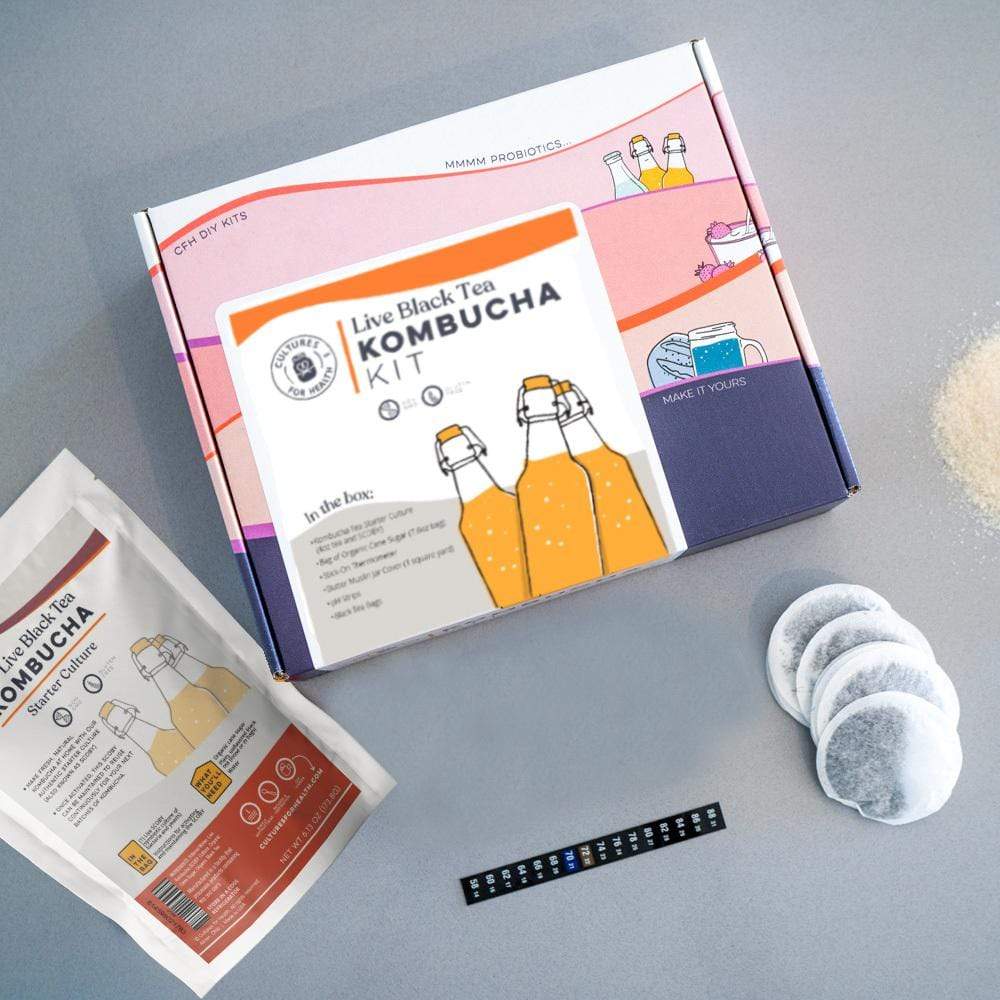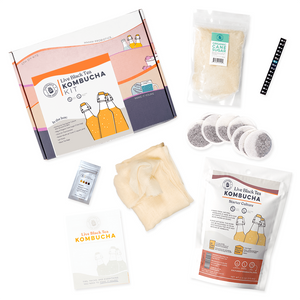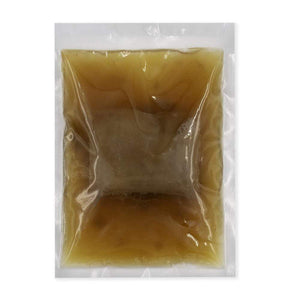
Kombucha is a fermented tea that has become increasingly popular in recent years. It's a refreshing and healthy drink that can be made at home using just a few simple ingredients. However, as with any home brewing, there are certain risks associated with the process. One of the most common problems new brewers run into when brewing kombucha at home is mold growth on their SCOBY.
In this article, we’ll discuss everything you need to know about mold on kombucha. We'll discuss what SCOBY mold is, how it develops, and, most importantly, how to prevent infected scobies from happening in the first place.
What is SCOBY Mold:

SCOBY mold is a pesky type of mold that enjoys making itself at home on the surface of the kombucha culture (a.k.a. the SCOBY). It can come in different colors, such as green, black, white, blue, or gray, accompanied by a bad or musty smell.
It has a fuzzy or dry appearance and can appear as spots on the kombucha SCOBY or cover the SCOBY entirely. If not taken care of, the mold can wreak havoc and kill the SCOBY, leaving it as black as night and ruining the entire batch of delicious kombucha.
More on This Here: What Does A Healthy SCOBY Look Like?
Furthermore, SCOBY mold is a sign of contamination and can pose health risks if consumed. Thus, it's crucial to identify it early on and take necessary precautions.
How Does SCOBY Mold Develop?
Now that we know what SCOBY mold is, let's understand how it develops.
Although the chances of mold contamination in kombucha are low due to its antibacterial properties and highly acidic pH levels, mold can still develop when the kombucha brewing conditions are not optimal. The following are some of the reasons why and how SCOBY mold can develop:
Poor Hygiene Practices
Kombucha brewing requires a clean and sanitized environment to prevent the growth of unwanted microbes, including mold. Any exposure to bacteria, dirt, or dust can lead to contamination.
If kombucha equipment isn’t properly sanitized or if the brewing environment is contaminated, mold spores can easily find their way onto the SCOBY and start to grow. This is why it's so crucial to sterilize all your kombucha equipment—for instance, jars, utensils, and even your hands before handling the SCOBY.
Related Source: Choosing The Best Kombucha Supplies
Under-Acidified or Not Enough Starter
Kombucha is a fermented tea that is naturally acidic, which helps prevent the growth of unwanted mold and other harmful microbes. However, if the acidity level of the kombucha is too low, it may not be able to defend itself against mold strains.
Thus, it's essential to always use a high-quality kombucha starter culture that is strong and acidic. You can test the acidity level using pH indicator strips, which should show a level between 2.5 and 3.5.
PRO TIP: To prevent mold growth in your kombucha, keep your SCOBY layers together. This creates a thick barrier that protects your brew from harmful mold strains. Plus, always save at least 2 cups of starter from your F1 fermentation.
Low Temperature
Kombucha loves to bask in warm temperatures ranging from 75–85°F (24–29°C). But, if things get chilly, it can spell trouble and create a cozy breeding ground for pesky mold.
Keeping the temperature below 64°F is a BIG NO because it slows down the fermentation process. And that's bad news, because the fermentation is what produces that acidic environment, which helps keep the unwanted mold at bay.
So, keep your brew feeling warm and healthy by maintaining a toasty mid-70s temperature range. Remember, healthy SCOBY = delicious and successful kombucha!
Poor Quality Ingredients

When brewing kombucha, the quality of the ingredients plays a significant role in the success of the batch. Using low-quality tea or sugar can introduce contaminants and impurities to your brew, which in turn can make the environment more conducive to mold growth.
Using high-quality tea that is free of contaminants can help prevent the growth of mold. Similarly, using pure sugar can help reduce the risk of introducing germs into the brew. So, always aim for the best when it comes to tea and sugar! Your taste buds (and gut) will thank you for it.
More on This Here: Choosing The Best Tea, Sugar, & Water For Making Kombucha At Home
Brewing Kombucha with Flavored Tea
Kombucha is typically brewed with black or green tea, but some people like to use herbal or flavored teas to add unique flavors. However, using these types of teas can mess up the environment in your first brew. How?
Well, you see, herbs lack the necessary nutrients to feed your SCOBY, leaving it hungry and weakened. Flavored teas with essential oils and other chemical flavorings can also hurt the SCOBY's natural protective barrier, making your SCOBY vulnerable to mold growth and bacterial infections.
So, if you're keen on trying herbal teas, use a few green or black tea bags in addition to give your SCOBY the strength it needs. And don't forget to use well-dried herbs and brew them with boiling water.
Always watch your SCOBY closely and taste-test your kombucha regularly to ensure the fermentation process is going smoothly.
Related Source: Does Kombucha Have Caffeine?
Lack of Air Circulation
Kombucha cultures require oxygen to ferment properly. Any restriction in the airflow can create a favorable environment for mold growth, like humidity.
How to Prevent SCOBY Mold
Preventing a moldy SCOBY is all about maintaining a clean and stable environment for the SCOBY to thrive in. Here are a few steps you can take to minimize the risk of mold growth:

-
Clean and Sanitize Your Equipment. Before you start brewing, make sure that all your equipment is thoroughly cleaned and sanitized. This includes your brewing vessel, utensils, and anything that will come into contact with the SCOBY.
-
Buy a SCOBY That's Strong and Acidic. Buying a strong and acidic SCOBY is important, because it will have a better chance of successfully fermenting your tea into kombucha. A healthy SCOBY will also be more resistant to mold and other harmful bacteria.
-
Use High-Quality Ingredients. Use high-quality tea and sugar that are free of contaminants or germs. You don't want any unwanted visitors to have a party on your precious SCOBY and start to grow, do you?
-
Use Filtered Water. Tap water can contain chlorine, fluoride, and other chemicals that can harm the SCOBY. Use filtered water instead to ensure that your SCOBY stays healthy.
-
Control the Temperature. As mentioned earlier, the ideal temperature range for brewing kombucha is between 75–85°F (24–29°C). Use a digital thermometer to check the temperature and make sure that it stays within this range.
-
Maintain Good Airflow. Ensure your kombucha has enough oxygen by allowing proper airflow during fermentation—avoid covering your brew too tightly.
-
Keep the SCOBY Healthy. Make sure that you are feeding your SCOBY regularly and that it's getting enough oxygen. Avoid exposing it to extreme temperatures or light, and always handle it with clean hands.
-
Track Fermentation. Keep an eye on the fermentation process and taste the kombucha regularly. Stop the fermentation process when it reaches the desired level of acidity.
What to Do if You Find SCOBY Mold
Despite your best efforts, if you still find mold on your SCOBY, here's what you need to do:
Live Black Tea Kombucha Starter Kit
-
Discard the Batch. Discard the entire batch of kombucha, including the SCOBY and the liquid. Don’t attempt to salvage any part of the batch, as mold spores can spread quickly.
-
Sterilize Everything. Clean and sterilize all your fermenting equipment, utensils, and hands thoroughly.
-
Start Fresh. Get a new SCOBY and start fresh with a new batch of kombucha. Make sure to follow all the prevention steps mentioned earlier.
The Bottom Line for Mold on Kombucha:
To wrap up, there are risks involved with brewing kombucha at home, including the growth of SCOBY mold. However, by maintaining a clean brewing area, using the right materials, and regularly monitoring your SCOBY, you can easily prevent mold growth and enjoy healthy kombucha.
Plus, with kombucha's antibacterial properties and high acidic pH levels, the chance of mold contamination is already pretty low. So with proper care, your SCOBY can last a long time. Keep experimenting and enjoying new flavors, and most importantly, HAVE FUN!













